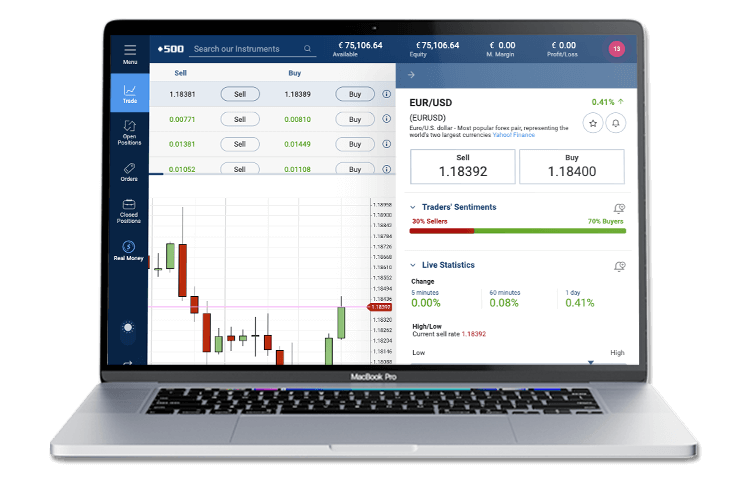What Does a EUR/USD Price Change Mean?
The EUR/USD is the world’s most traded currency pair, and is one way to compare the economies of the United States and the EuroZone. There are several factors that may influence the EUR/USD rate and how it moves. Let’s look at how traders read and calculate EUR/USD price changes in order to plan their Forex positions more accurately.
The EUR/USD (EURUSD) exchange rate reflects the number of Dollars it takes to buy one Euro. As with most currency pairs, the EUR/USD price floats. This means that it changes constantly, five days a week, 24 hours a day, in reaction to the latest market conditions. The Forex OTC market has the longest trading hours outside of Cryptocurrencies. Its high liquidity is one reason why Forex is the largest market in the world and why it is attractive to so many traders, as no single bank can control the movements of the different currency pairs.
The value of the EUR/USD pair is influenced by several factors, including the relative strengths and weaknesses of both of the underlying economies, geopolitical and economic events, and government actions taken to protect either the Euro or the Dollar. Traders may make use of EUR/USD price changes to speculate on the trends affecting the forex pair’s rate, either positively or negatively. Traders can also take advantage of arbitrage when working with the EUR/USD, as different areas of the world can be buying and selling the pair at different rates.

Illustrative prices.
Why are pips important in EUR/USD price changes?
In the EUR/USD forex pair, price changes are measured in pips which represent the fourth decimal place that can be measured in a Forex pair. Some brokers such as Plus500 also allow traders to view fractional pip movements, called pipettes. Pipettes are measured at the fifth decimal place in the EUR/USD Forex pair.
The value of a pip depends on your lot size and the denomination of your account. A standard lot is 100,000 units of the FX pair’s base currency and a mini lot is 10,000 units of the base currency. So, a pip in a standard EUR/USD lot when your account is denominated in USD is equal to $10, while a pip in a mini EUR/USD lot is equal to $1. Some platforms such as Plus500 offer micro lots which consist of 1,000 units of the base currency. In that case, a pip is worth 10 cents.
If your account is denominated in EUR, you would need to find the pip value by dividing the original fixed pip rate by the current exchange rate. For example, say the EUR/USD rate is 1.21160 and the fixed rate for a pip denominated in USD (if your account is a mini lot) is $1. Then, you would divide $1 by 1.21160 to get the Euro denominated pip value of 0.83 EUR.
Traders should be able to calculate pip movements for several reasons. One purpose for this calculation is to figure out the difference between the BUY price and the SELL price of the EUR/USD pair. This difference is also referred to as the “spread”.
The spread can change on an ongoing basis, and reacts to things like market conditions, time of day, and the number of people interested in buying or selling the EUR/USD currency pair. Traders may want to choose CFD providers who keep the spread as low as possible to increase their chances of profitability. Therefore, they pay attention to pip movements throughout the day.
Traders also use pip movements to determine how much the pair’s price has changed after opening a position. This amount will be the position’s profit or loss. For example, if you open a EUR/USD long position and close it at a higher rate, then you will make a profit equal to the difference between the opening and closing rates and if you close the position at a lower rate, your loss will be equal to the difference between the opening and closing rates. Similarly, if you open a EUR/USD short position, you will make a profit if the closing price goes lower than the opening price, and you will incur a loss if the closing price is higher than the opening price. Additionally, it is important to be able to calculate the pip movements which will allow a trader to determine the exact amount to risk and/or the expected return by using the relevant risk management tools (stop loss/take profit).
Traders who are looking for exposure to the Dollar only, instead of to both the Dollar and the Euro, may wish to consider the U.S. Dollar Index, which measures the Dollar against a basket of the world’s top currencies, instead of against a single currency.
